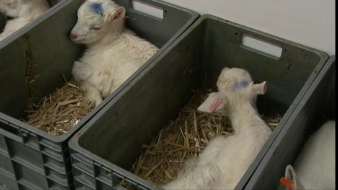Showing the interest of intercultural confrontation
Issue
What are the main interests in combining distance and physical steps in your pedagogical process?Given that the conception of animal welfare and associated practices differ across cultures, exchanges based on cross-cultural exchange may create socio-cognitive conflict that is conducive to learning. This is therefore one of the great advantages of e-learning. It is possible to reach participants regardless of their location. You can connect participants from different countries, territories and allow a debate between individuals from different cultures (we consider culture in a wide definition : each person has his own culture according to his personal and professional life ; it means that a group is necessarily intercultural). Here, culture is seen as a kind of the person's worldview.
A second benefit is that it allows for asynchronous learning. Each learner can adapt the exchanges to his or her own pace and location. This is a possible optimisation factor for work-study schemes. In particular, in the context of an online debate, it is possible to have time for reflection and self-examination before drawing up a response, which is rarely possible in face-to-face discussions.
One of the major advantages of the remote tools setup within the framework of Anicare is to favour anonymity, and therefore to allow greater authenticity of the person in the exchanges. This anonymity is all the more important as a pedagogy relating to the social issue of animal welfare raises controversies and therefore conflicts of values and representations.
However, the limits of a training course that would only take place at a distance should not be overlooked. E-learning is a solitary activity and distance exchanges are generally more limited if they are in writing. Participants who drop out of the approaches we have tested do so for several reasons: the technical connection is not easy, malfunctions, messages do not reach their recipients, are recognized as spam. They do not understand what the learning process is about. They feel too constrained by the framework proposed to them. The interface is not pleasant enough.
Objective
For the trainer : to show the interest of a pedagogical process alternating face-to-face and by-distance situations allowing time for reflection, anonymous expressions and the possibility to exchange with persons from other cultures (with the interest to create cognitive dissonance).For the trainee : to discover the interest of a by-distance intercultural confrontation
Principles
The combination of the by-distance and physical steps can be adapted to your own context and intention. If we take a constructivist approach, it is important to bring out the participants' representations of animal welfare. The ability to express this anonymously is likely to promote greater authenticity. It may be appropriate to propose this first step from a distance. The facilitator will then be able to highlight points of convergence and divergence without having to name anyone. These can be used as a basis for a possible discussion/resolution of a problem situation, either face-to-face or remotely.
Tools
Aniphi has been developed during the Anicare project to enable open and by-distance training about animal welfare triggered by the use of movies of farmer practices. The platform is based on a socio-constructivist approach: collecting the conceptions related to a problem situation, enabling a confrontation of points of view, and creating new cognitive dissonances based on movies of breeder practices reviewed by the breeders themselves and by scientists. The main interest of the platform is to allow for students to express their views anonymously and by using their own words and therefore expressing their values and perspectives freely. Specifically, Aniphi defines 4 main steps for the pedagogical process: (1) individually, the learner analyses a problem situation : the participant is invited to answer to a case study, a dilemma or a philosophical question ; his answer is anonymous (2) a synthesis of the reaction of the proposals made by all the participants are presented to the participants; the participant will have to give their opinions about each proposal (3) the percentage of points of view for each proposals is presented to the participants who are invited to reflect upon their previous perspectives in light of what other students have thought and give their feedback, (4) Movies of breeder practices reviewed by the breeders themselves and by scientists are proposed to the participants. The movies are chosen by the educators in a database (for example Anicare movies database) according to his problem situation and the main obstacles that he observes. In this last round, the participants will finally give their final opinion about the problem situation.After this by-distance activity, a face-to-face debate with the participants can be led about specific issues which merged from the first steps.
Pitfalls and advices
If a by-distance intercultural confrontation can be an interesting way to learn about animal welfare, the trainee has to consider also the limits of the approach: if some learners (especially the youngest ones) use internet possibilities, it is not the case for most of the adults. Distance learning is not considered to be more effective than face-to-face training. If the approach can be interesting in initial training, it is less operational with farmers. Their workload makes them less available, the internet connexion is not always good in the countryside and it is probably preferable to bring them together face-to-face when possible. If not, choose the most efficient mobile application, according to the habits of the farmers. It is important also to consider that the learners can wait for a more old fashion teaching and that they can be reluctant to use new approaches.Before starting the remote exchanges, it is advised to first allow participants to have a more convivial and informal discussion that allows them to break the ice and become aware of the individualities hidden behind the screens.












